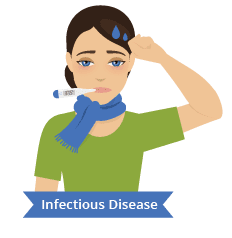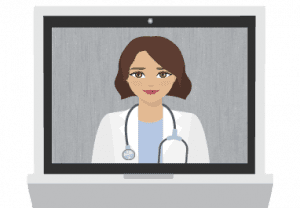For Tele-ID, Doctor-Patient Communication Is Just as Important as Lab Results
By Dr. Talbot “Mac” McCormick • February 2020
By Dr. Talbot “Mac” McCormick • February 2020
 With rapid spread of coronavirus across the U.S., we’ve seen a lot of news coverage lately about telemedicine’s role in treating the infectious diseases (IDs) that are making headlines. A recent mHealth Intelligence article about a Mayo Clinic study demonstrating telehealth’s value to rural hospitals was of interest, even though it told only part of the story.
With rapid spread of coronavirus across the U.S., we’ve seen a lot of news coverage lately about telemedicine’s role in treating the infectious diseases (IDs) that are making headlines. A recent mHealth Intelligence article about a Mayo Clinic study demonstrating telehealth’s value to rural hospitals was of interest, even though it told only part of the story.
The article dealt with two rural hospitals using an asynchronous telehealth platform (also known as store-and-forward technology) for ID specialists at Mayo’s Rochester hospital to study X-rays, lab results and other data about ID patient and recommend interventions like changes in antibiotics, additional lab testing and consults with other specialists.
The results have been good, but the study left out the other type of telemedicine—the synchronous variety in which videoconferencing technology enables one-on-one visits between patients and their families and tele-ID specialists. Tele-ID physicians typically use the technology to examine patients, assess the physical manifestations of their condition, ask questions about the symptoms the patients are experiencing, then explain their condition and what can be done to help them.
The study’s lead author was quoted as saying the study intentionally “avoids the complexity of synchronous/videohealth.”
At Eagle Telemedicine, a big part of our tele-ID specialists’ job is to review lab results, cultures and X-rays before and after patient visits. But even more significant is the synchronous work they do—talking with patients and families of patients with infectious diseases, finding out more about their symptoms, answering their questions and giving information to address their concerns.
 Our philosophy is that the patient can have both, regardless of whether they are in a rural or metropolitan area.
Our philosophy is that the patient can have both, regardless of whether they are in a rural or metropolitan area.
Today’s flu season is keeping tele-ID specialists busy. They report seeing more cases of Type A flu this year. As far as the coronavirus goes, it seems far away now, but it’s only a matter of time before more cases are found beyond the 11 confirmed cases in the U.S.
Our tele-ID physicians are working with their clinical colleagues on-the-ground in our hospitals to check which incoming patients have traveled outside the country or whether they have come in contact with anyone who traveled outside the country in the prior two weeks.
While we applaud the two hospitals that participated in the Mayo study and the demonstrated results, we believe our approach building on that—with direct engagement and communication with patients and families—delivers substantial value to patients and staff in rural and urban hospitals who may not have local ID specialists.